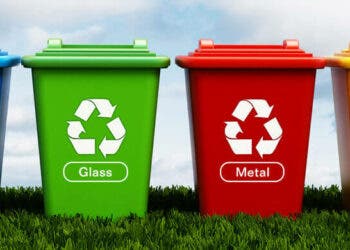
Most U.S. metal mines are built to dig for one or two things: copper, iron, or in some places maybe gold. But here’s the thing — when these mining companies pull up ore, the majority of its content isn’t copper or iron or gold. It’s something else. And that “something else” might just hold the keys to our clean energy future.
“We’re only producing a few commodities,” said Elizabeth Holley, a mining engineer at the Colorado School of Mines. “The question is: What else is in those rocks?”
The answer, as her new study shows, is a lot.
For instance, there’s a lot of lithium, the alkali metal that’s essential to powering modern electric vehicles, smartphones, and virtually almost anything portable that needs power. One year of U.S. mine waste contains enough lithium to power 10 million electric cars.
The same study also found that U.S. mining waste contains enough manganese for 99 million EVs, as well as enough cobalt, germanium, and other rare metals to all but wipe out U.S. imports.
The Waste Pile Goldmine
Holley and her team combed through data from 54 active U.S. metal mines. They cross-referenced ore chemistry with mine production, building a first-of-its-kind map of what’s really being dug out of the ground. Their conclusion: America already mines almost every critical mineral it needs — cobalt, lithium, gallium, rare earths, germanium. The only problem is that instead of recovering them, we toss them into tailings piles.
The estimated numbers of how much valuable metals and rare earths the mining industry discards are staggering.
Holley puts it bluntly: “It’s like getting salt out of bread dough — we need to do a lot more research, development and policy to make the recovery of these critical minerals economically feasible.”
That means rethinking how we process rock. Mining companies today focus narrowly on their main product. Everything else gets crushed, washed, and dumped as waste. Holley’s team estimates that recovering even 1 percent of the byproducts would “substantially reduce” reliance on imports. With 90 percent recovery, imports of almost all critical minerals could be eliminated.
Why It Matters
This isn’t just about EV batteries and wind turbines — though those are on the line. Critical minerals power satellites, fighter jets, solar panels, and medical devices. And right now, the U.S. relies on a precarious global supply chain: lithium from Chile and Australia, cobalt from the Democratic Republic of Congo, rare earths controlled by an increasingly antagonizing China.
That dependence is the source of major geopolitical tensions. Nations used to mainly fight about oil; now, it’s all about minerals. Earlier this year, China expanded export controls on rare earths. President Donald Trump invoked wartime powers to accelerate U.S. extraction of minerals like uranium, copper, potash, and gold. The Pentagon poured $400 million into the country’s only rare-earth mine. Congress, meanwhile, slashed funding to federal science programs that might actually help us figure out how to recycle more of what we already dig up.
“Our national and economic security are now acutely threatened by our reliance upon hostile foreign powers’ mineral production,” Trump’s executive order warned.
Holley’s research lands right in the middle of this storm. If we can rewire the mines to scoop up byproducts, we might stabilize supply chains without opening new pits or blowing up more mountains.
“It would be better to get more out of what we already mine,” Holley said.
From Tailings to Tech
Exploiting critical minerals in byproduct mining waste is messy and challenging. Minerals like gallium and tellurium show up in trace amounts, hidden inside more common ores. Extracting them requires new refining steps, extra circuits, and different reagents. It’s costly and risky.
Mines work on very tight margins, and demand for any single mineral can swing wildly depending on the latest tech trend. At the same time, mining is a very old-fashioned industry, which means they won’t be inclined to take risks that might cost them a lot of money if they aren’t given the right nudge.
Still, the opportunity is hard to ignore. At Alaska’s Red Dog mine, Holley’s team found some of the largest germanium potential in the country. In Montana, nickel-rich byproducts could be recovered at the Stillwater and East Boulder mines. Even tiny recovery percentages would dwarf imports.
And there’s an environmental upside: less waste. Mine tailings are toxic messes that require perpetual monitoring. If metals are stripped out instead, the leftovers become more inert and potentially reusable in construction. “By-product recovery is a resource-efficient approach,” Holley and her colleagues wrote. It reduces waste, cuts geopolitical risk, and leverages the massive energy we already spend mining rock.
The Road Ahead
Holley calls this “low-hanging fruit.” But harvesting it requires political will. Mines need incentives to invest in new processing gear. Government agencies need to support systematic sampling so companies actually know what’s in their ore streams.
We also need policies that incentivize mine operators to incorporate additional processing infrastructure. Without that push, most companies won’t bother.
The Department of Energy has started pilot programs for byproduct recovery. A billion dollars in unconventional mining support was announced this summer. But funding remains scattered, and regulatory clarity is thin.
The big picture, Holley argues, is simple: America doesn’t have a geology problem. It has a mining problem. The minerals are already here. We’re just letting them slip through our fingers.
“Unlocking the by-products from the rock that is already being mined will require significant advancements,” the paper published in the journal Science concludes. “Even 1% recovery would substantially reduce net import reliance for most critical minerals.”






